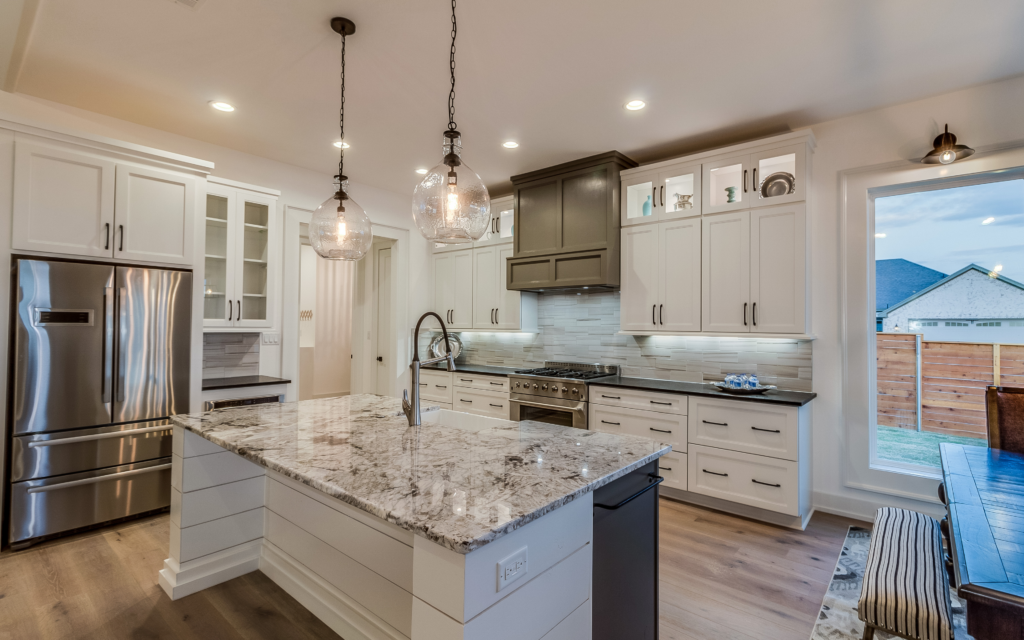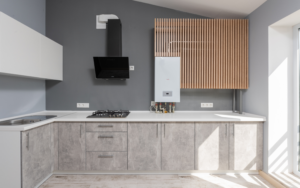Your kitchen countertops are essential working surfaces that also make a major decorative statement in your home. But with heavy daily use, exposure to water, heat, knives, and more, it’s no wonder countertops can develop problems over time.
I’ll walk you through the most common countertop issues like cracks, stains, and uneven surfaces. You’ll learn what causes them, along with DIY fixes and prevention tips. With some regularly maintained care and strategic repairs, you can keep your countertops looking great.
Table of Contents
This guide applies to all the most popular countertop materials – natural stone, solid surface, laminate, tile, concrete, and more. By understanding what can damage your countertops and how to fix issues early, you can avoid expensive full countertop replacements.
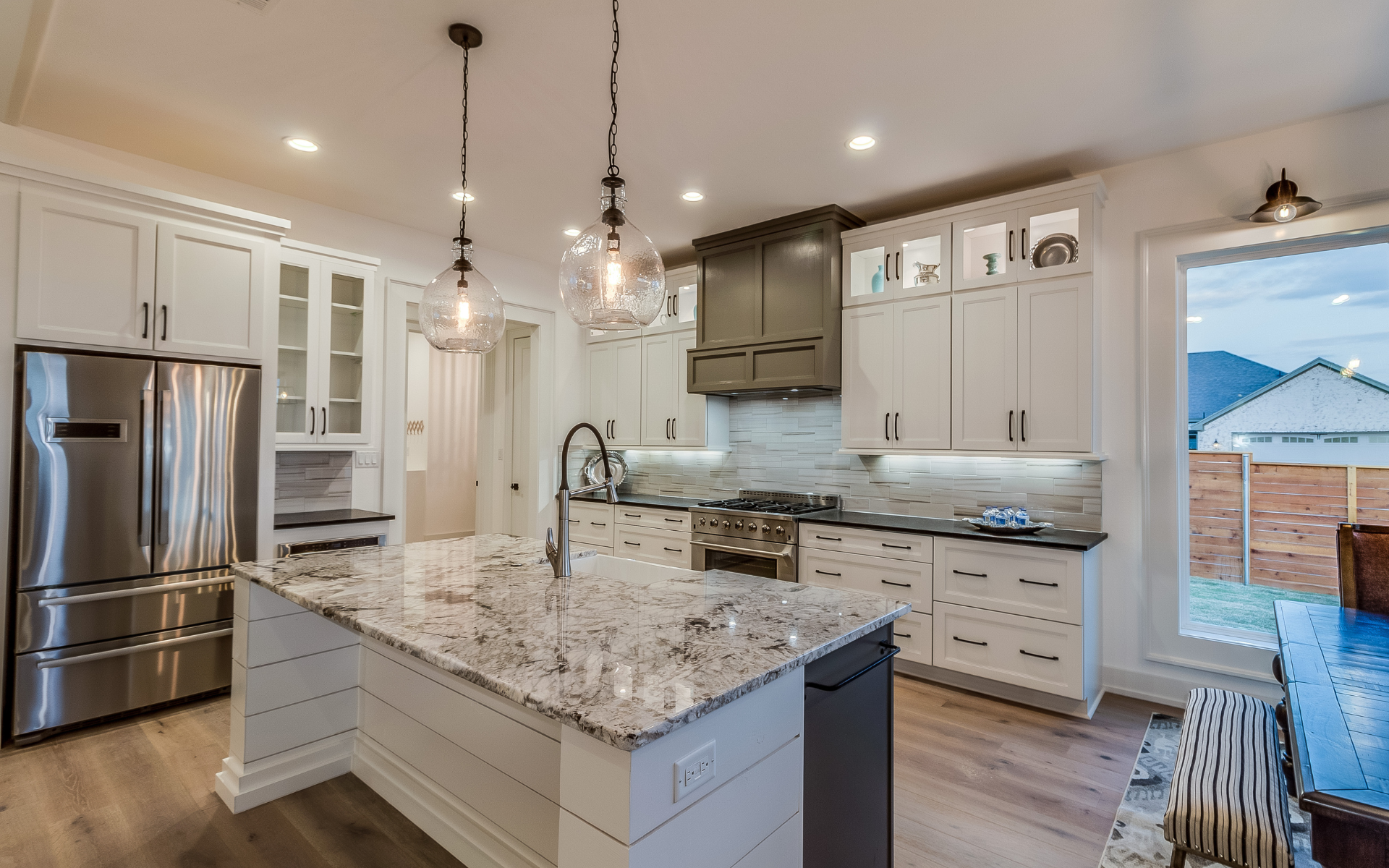
1. Cracks and Chips
Cracks and chips in your countertops not only look unsightly but also create grooves that can harbor bacteria. Luckily, it’s possible to repair minor cracks and chips yourself, restoring your countertops’ smooth and hygienic surface.
What Causes Cracks and Chips?
Countertops crack and chip from impact, force, and natural wear and tear over many years of use. Hot pans straight from the oven or stove can also cause rapid temperature changes that lead to cracks in delicate materials like natural stone. Using your countertop as a cutting board leads to nicks and cuts over time too.
Chips and cracks happen more frequently on countertops made from softer or more porous materials like concrete, natural stone, and tile. Harder surfaces like quartz and solid surfaces are more resistant.
DIY Crack and Chip Repairs
For natural stone, a penetrating epoxy sealer formulated for stone can fill in cracks and crevices. Apply to clean dry stone following product directions. The sealer cures slowly, so take your time smoothing it into the damaged area. Remove any excess once cured.
For other countertop materials, use a patch kit in a matching color to fill cracks and chips. Thoroughly clean and dry the damaged area, then mix and apply patching compound, smoothing with a putty knife. Sand once dry. On laminate, touch up spots with laminate repair crayons after cleaning.
If the damage is extensive, call in a pro for more complex repairs like grinding down high spots and rebuilding layers. They have specialized tools and materials to restore your countertops.
Preventing Cracks and Chips
To help avoid chips and cracks in the first place:
- Use cutting boards instead of cutting directly on countertops
- Don’t place hot pans directly on the surface – use trivets and hot pads
- Avoid hard impacts from heavy objects being dropped
- Seal porous natural stone to prevent moisture damage
- Clean spills quickly to avoid prolonged exposure to liquids
- Inspect for damage periodically and repair right away
With proper care and regular maintenance, you can minimize cracks and chips over the life of your countertops.
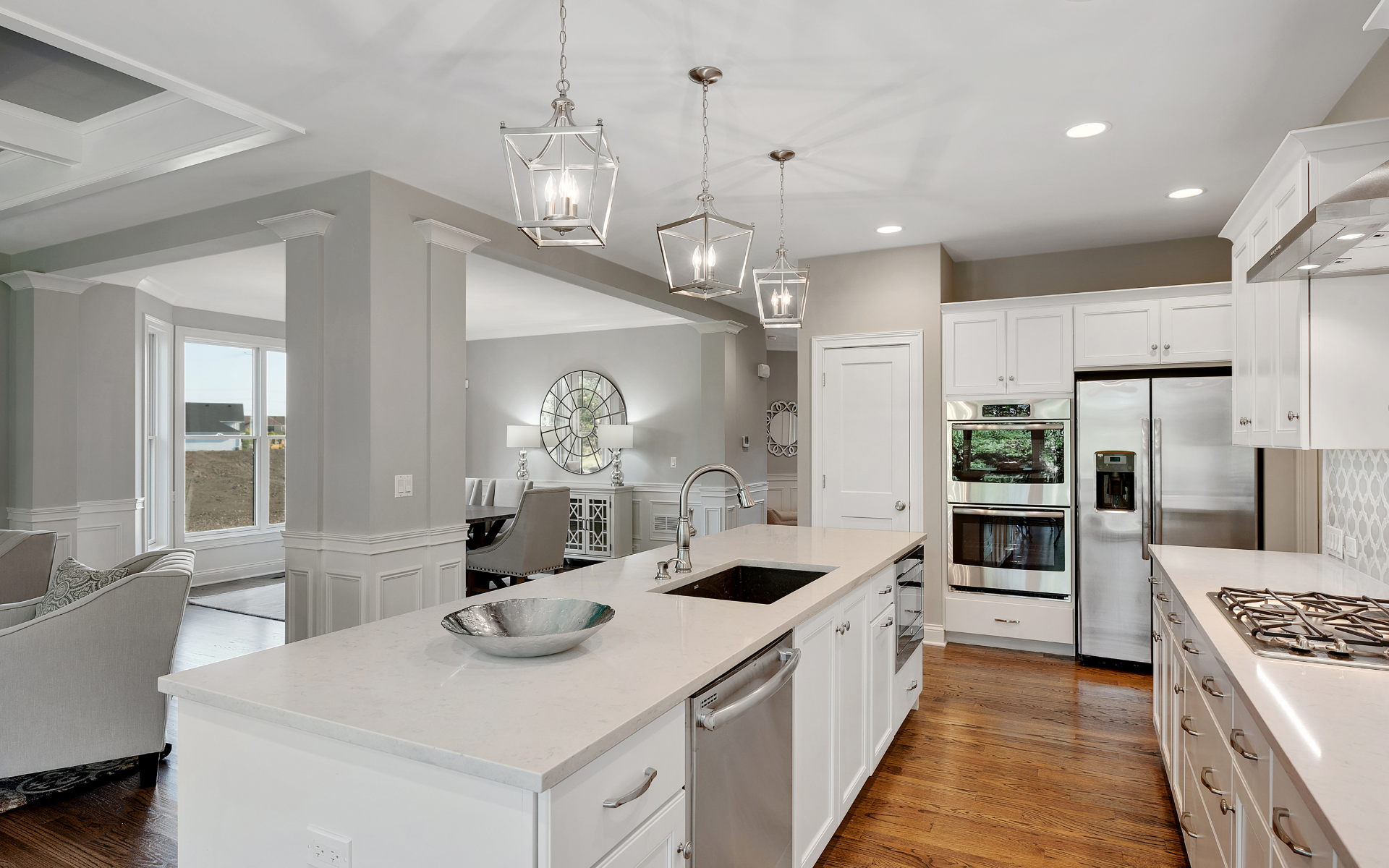
2. Stains and Discoloration
Stains from food, liquids, and chemicals can make your once-beautiful countertops appear dirty, dingy, and undesirable. Bleach, wine, oil, and more can seep in and discolor the material. Here are some stain-fighting tips for all countertop types.
Common Causes of Stains
Countertop stains come from a variety of sources:
- Food and beverages like coffee, wine, oil, tomatoes, mustard
- Household chemicals such as bleach, cleaners, disinfectants
- Cosmetics and toiletries, including makeup, self-tanners, hair dye
- Medications like benzoyl peroxide
- Varnishes and dyes from construction materials during installation
Some materials like marble are more prone to staining than impervious surfaces like quartz. Porous unsealed textures allow stains to penetrate deeper over time.
Removing Stains
For organic stains from food and beverages, immediately absorb as much as possible with a dry towel. Flush the area with hot soapy water, then scrub with a damp nonabrasive cloth.
For tougher stains, make a baking soda and water paste. Apply to the stain and allow to sit for 30 minutes before scrubbing and rinsing. Undiluted white vinegar can also help dissolve stubborn organic stains – test first in an inconspicuous area.
For chemical stains, identify the substance first if possible. Avoid applying heat, which can set stains. Use a mild non-abrasive cleaner specifically formulated for your countertop material.
If needed, seek professional help for stubborn or deep-set stains. Pros have commercial products and tools to lift stains without harming surfaces.
Preventing Stains
Good daily habits keep stains at bay:
- Wipe up spills immediately
- Use cutting boards, trivets, and placemats
- Avoid exposing countertops to harsh cleaners and chemicals
- Seal porous stone to create a protective barrier
- Clean with a gentle pH-neutral cleaner and soft cloth
Quick action prevents stains from setting and ruining your counters’ appearance. With diligent care, your countertops will stay looking like new.

3. Uneven Surfaces
Does your countertop have noticeable divots, bumps, or sloping areas that make prepping meals a pain? Uneven surfaces develop from improper installation, shifting over time, impacts, and inadequate support underneath. Here are some ways to fix lumpy countertops and prevent future problems.
What Causes Uneven Surfaces?
Countertops become uneven due to:
- Poor installation where the underside isn’t properly supported.
- Settling of cabinets or subflooring over time, throwing the countertop out of level.
- Impacts that dent the surface, like heavy objects being dropped.
- Excess moisture reaches untreated wood substrates, causing swelling.
- Normal wear and tear from daily use over many years.
Thinner countertop materials around 1/2″ thick like laminate are most vulnerable to warping and weak spots from inadequate support.
Repairing Uneven Areas
Fixing uneven spots often requires removing and reinstalling the countertop properly. A professional can:
- Detach countertops from cabinets and shim up low spots in the base cabinets so everything is level.
- Grind down minor high points to create a flat surface.
- Replace severely compromised sections.
- Reattach countertops, fully supported underneath.
For small spaces, an epoxy coating can fill in low spots to create a flat, level surface.
Preventing Unevenness
Prevent uneven countertops by:
- Make sure base cabinets are plumb, level, and securely attached before installing new countertops.
- Use thick granite, quartz, or solid surface materials around 1 – 1 1/4″ thick.
- Replacing swelling or warping base materials like plywood.
- Avoid placing very heavy objects in one spot.
- Getting uneven surfaces professionally re-leveled before problems worsen.
Proper installation and care keep your counters flat and functional.
FAQs
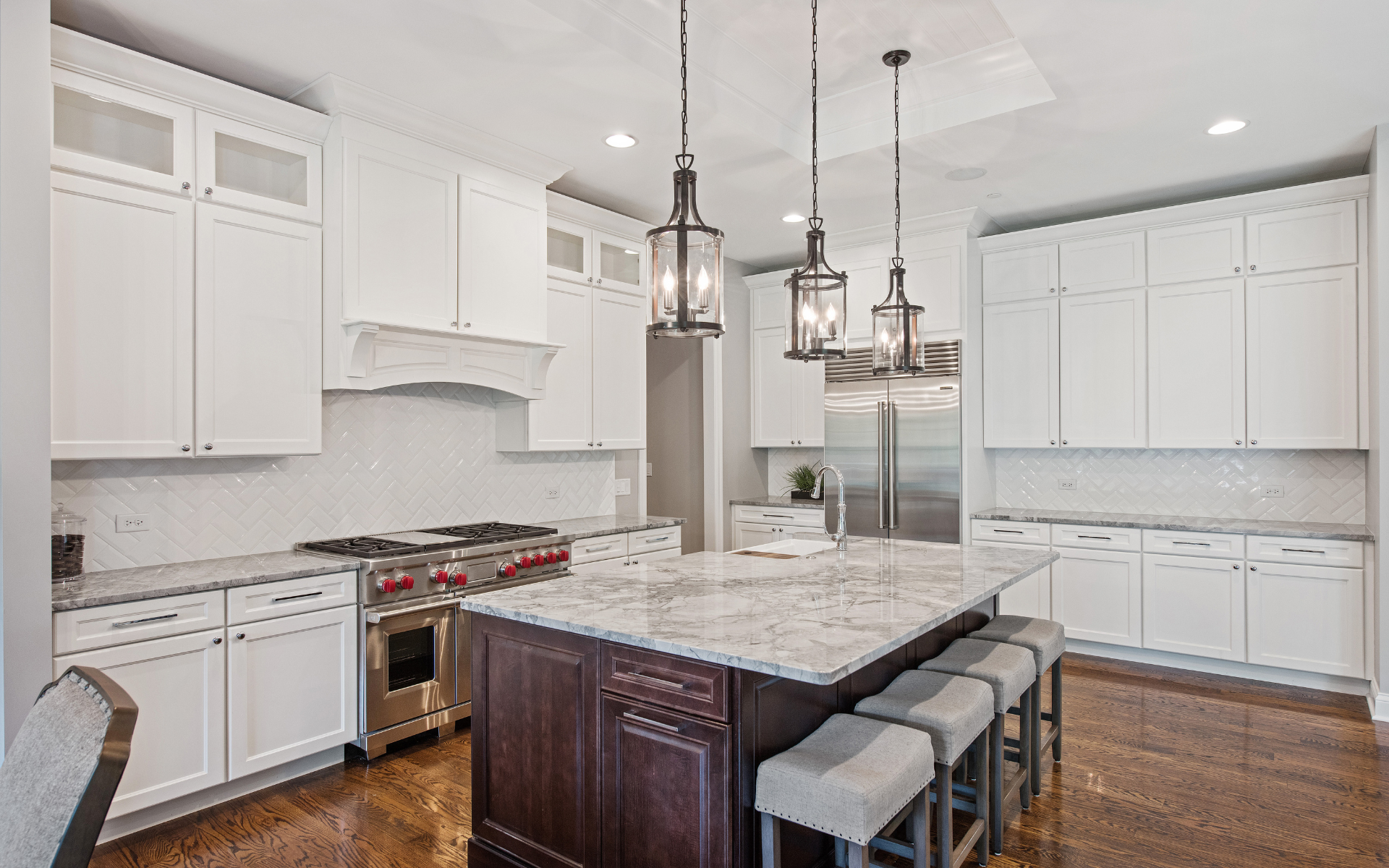
How do you maintain countertops?
Seal porous materials 1-2 times yearly. Use cutting boards and trivets. Clean spills immediately. Use a gentle daily cleaner and a soft cloth. Inspect monthly and repair damage right away.
How can I protect my countertops?
Use coasters and placemats. Apply wax to natural stone monthly. Re-seal yearly. Avoid direct hot pan contact. Fix plumbing leaks immediately.
What is the lifespan of kitchen countertops?
With proper care: granite 50+ years, quartz 15-25 years, laminate 10-15 years, tile 5-10 years, concrete 8-12 years, butcher block 5-10 years. Quality installation and maintenance extend lifespan.

Final Thoughts
With heavy daily use, kitchen countertops are prone to damage like cracks, stains, and uneven surfaces that can make them look unsightly. But in many cases, these common issues can be repaired or avoided altogether with the right maintenance and care.
Protect your countertops by using cutting boards, coasters, and trivets. Act quickly to clean spills and stains before they set. Re-seal porous materials annually. Inspect for problems routinely and get them fixed right away before they worsen or spread. With preventative care and strategic fixes as needed, your countertops can stay looking like new for many years of cooking and entertaining!
I hope you found these common countertop problem-solving tips helpful. Let me know if you have any other questions – I’m happy to help! Here’s to keeping your countertops in tip-top shape.

